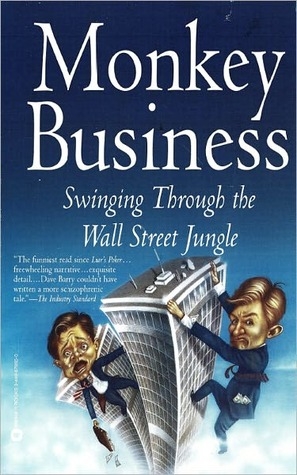
Recruiting: Yhe Seeds of a Dream
See the happy moron,
He doesn’t give a damn.
I wish I were a moron—
My God, perhaps I am!
—Anonymous rhyme
In the middle of Times Square, at the intersection of Broadway and Fortythird
Street, sits what was once the United States Armed Services’ premiere
recruiting office. The office, built almost fifty years ago, was conceived as a
shining testament to the unlimited promise of a military career, positioned
as it was in the middle of the Crossroads to the World. Today, though, it is
only a vague reminder of what it once was. Vagrants use the back of the
building to provide some relief from the summer sun, and occasional relief
from a bottle of Boone’s Farm. On a good day, a few listless teenagers may
wander in to find out exactly how much they’ll get paid to be all they can
be.
With the decline of the military’s once-venerable institution, however,
has come a concomitant rise in another recruiting institution: the Wall Street
Investment Banking Machine. From lower Manhattan to midtown, the well-
oiled device hums around the clock and around the calendar. Its serpentine
tentacles are rooted in nearly every well-regarded undergraduate institution
in the country and all of the top business schools. The machine’s sole
objective: to fill the conduit with as many analysts and associates—the serfs
and indentured servants of the investment banking world—as it can find.
Ultimately, as we would find out, a large part of any investment bank’s
success becomes a function of how many bodies it can throw at a given
piece of business, or, even more important, a potential piece of business.
The effort to fill the pipeline with these bodies, therefore, is never ending.
The Analysts
At the lowest level of the investment banking hierarchy are the analysts. To
find this young talent, the I-banks send their manicured young bankers out
to the Whartons, Harvards, and Princetons of the world to roll out the red
carpet for the top undergraduates and begin the process of destroying
whatever noble ideals these youngsters may still have left. For the
recruiting banker, the ideal analyst candidate is somebody with aboveaverage
intelligence, a love of money (or the capacity to learn that love), a
view of the world conforming with that of the Marquis de Sade, and the
willingness to work all night, every night, with a big grin on his face, like
the joker from Batman.
The analysts are at the bottom of the shit heap. They are the algae under
the rim of the public toilets at the Port Authority bus station, the scum
below the scum at the bottom of a beer keg. They’ll spend two to three
years being mentally, emotionally, and physically abused, and for that
benefit they’ll be well trained and extremely well compensated. No matter
how bad things get, they’ll never have anybody lower on the corporate
totem pole to whom they can off-load their misery.
Following their two- to three-year stint, the vast majority of the analysts
will either strike out for any of a handful of graduate business schools,
depart the firm for other opportunities within Wall Street’s financial
community, or regain their sanity and elect to pursue other interests entirely.
There’s very little upward mobility from the analyst programs into the
higher echelons of the investment bank. Analysts quickly learn, in no
Monkey Business: Swinging Through the Wall Street Jungle by John Rolfe




